Dateline – July 2020 – Lewisville, Texas
I look for opportunities to photograph urban wildlife almost everywhere I go in DFW. I was at the city dog park when I took the pictures shared in this article. As the pups and I were walking along, I noticed the shadow of a bird zoom across the ground in front of me. I looked up just in time to see a beautiful Mississippi Kite alight atop a tree just a short distance away.

Mississippi Kites are some of my favorite birds. Sleek and beautiful, this bird’s multi-shade-of-gray plumage and no-nonsense appearance invoke the attitude of a deadly modern fighter jet. The kite’s intense, ruby-red eyes only work to heighten the effect.
This crow-sized bird makes its living hunting and feeding on large insects such as grasshoppers, cicadas, and dragonflies. It this particular case it was dragonflies that were on the menu. The trees surrounding the dog park are full of these flying insects, and when they occasionally move out over the short grass of the park grounds, they become easy pickings for a hungry kite. All the clever bird has to do is find a strategically advantageous perch where he can keep an eye out for dragonflies making this ill-advised move.

It has been my experience with Mississippi Kites that they are relatively tolerant of observation, and this one was no exception. He held his position atop the small tree, allowing me to achieve a proximity that few other birds will permit. Not only did he stick around for the approach, but he also remained in place for the pictures. I was able to take so many pictures of this attractive bird that I felt there would be little value in taking more—a rare problem to have when pursuing wildlife photography! Ordinarily, I find myself wishing my subject had stayed put just long enough for a few more pictures than I was actually able to take!
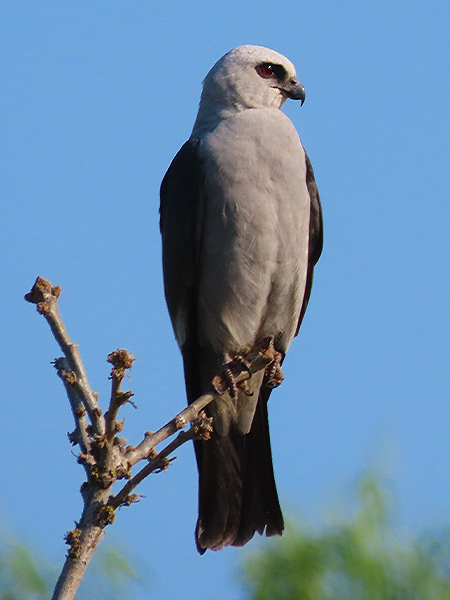
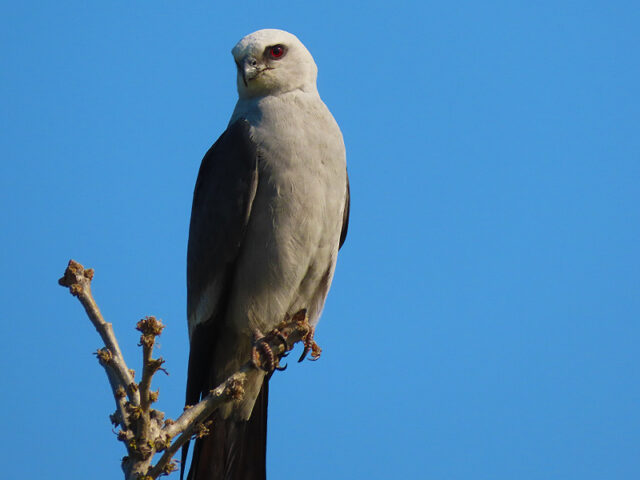

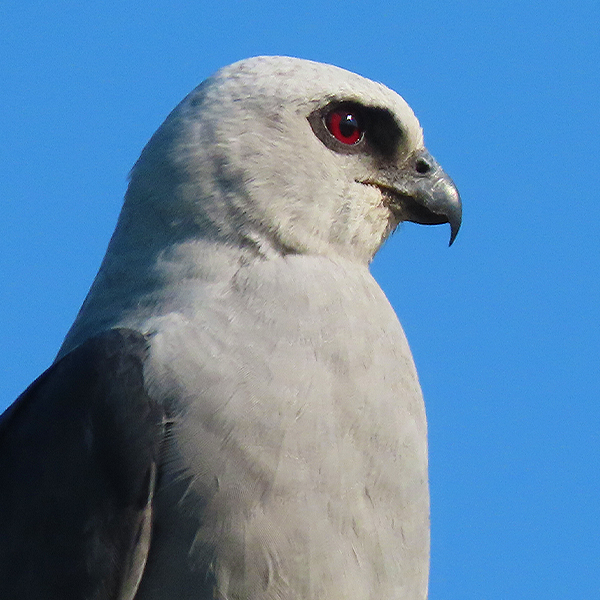


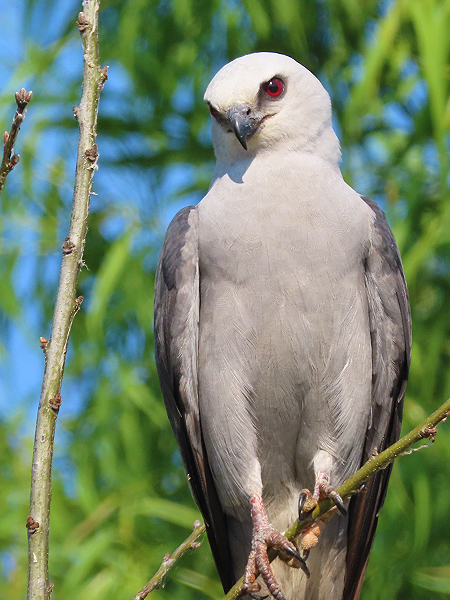

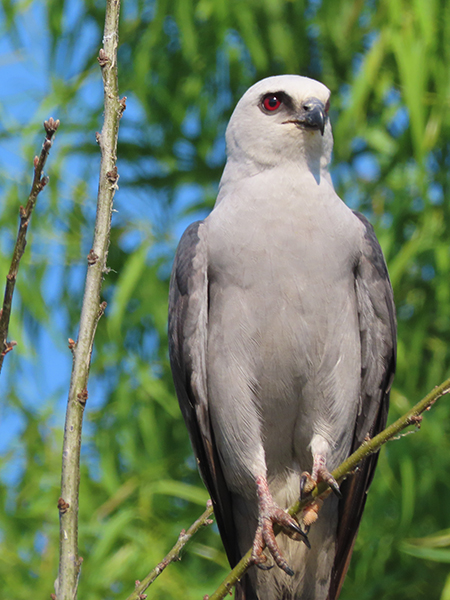


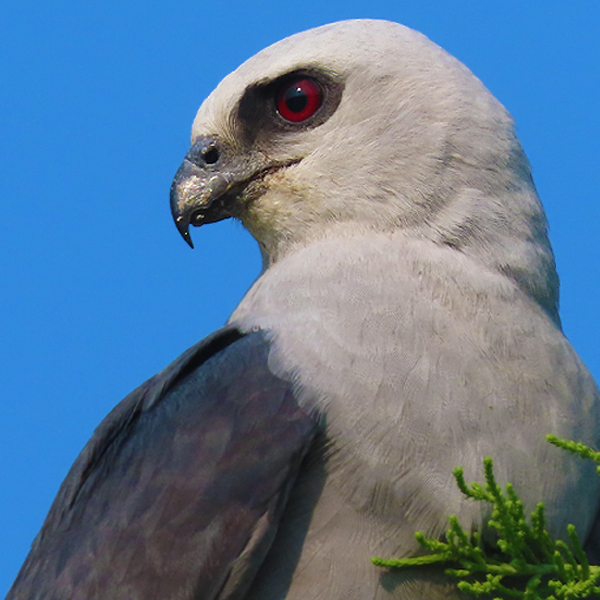

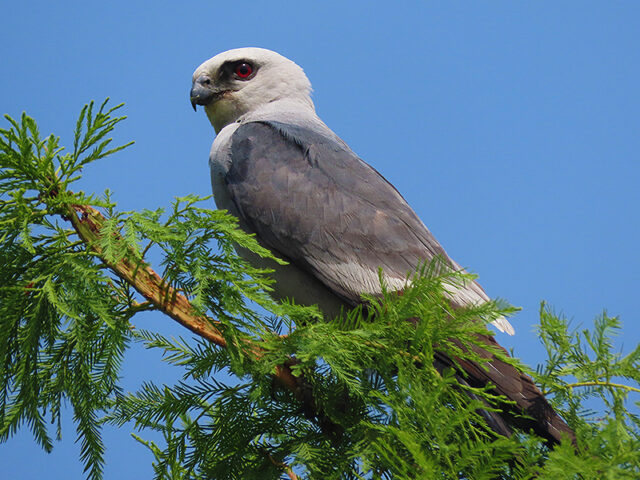

Mississippi Kites are in North Texas during our summer months. They overwinter deep in the interior of South America. They migrate back to North Texas each year in order to nest and raise their young. Wikipedia elaborates on the breeding habits of the Mississippi Kite in this way…
Mississippi kites are monogamous, forming breeding pairs before or soon after arriving at breeding sites. Courtship displays are rare, however individuals have been seen guarding their nests from competitors.
Mississippi kites usually lay two white eggs (rarely one or three) in twig nests that rest in a variety of deciduous trees, most commonly in elm, eastern cottonwood, hackberry, oak, and mesquite. Except in elm and cottonwood, most nests are fewer than 20 feet (6 m) above the ground, and are usually near water. Eggs are white to pale-bluish in color, and are usually about 1.5 inches (3.8 cm) long. In the past 75 years, they have undergone changes in nesting habitat from use of forest and savanna to include shelter-belts and are now very common nesters in urban area that are highly populated in the western south-central states.
Mississippi kites nest in colonies and both parents (paired up before arriving at the nesting site) incubate the eggs and care for the young. They have one clutch a year which takes 30 to 32 days to hatch. The young birds leave the nest another 30 to 34 days after hatching. Only about half of kites successfully raise their young. Clutches fall victim to storms and predators such as raccoons and great horned owls. Because of the reduced amount of predators in urban areas, Mississippi kites produce more offspring in urban areas than rural areas. They have an average lifespan of 8 years.
As summer in North Texas comes to a close, it is not uncommon—in certain places around Dallas/Fort Worth—to find large kettles of adult and first season juvenile kites marshaling in preparation for their long migration back to South America. Kites in flight are easy to recognize from their sharply pointed wings and large, fan-shaped tails… Just a little something to keep a look out for as we get closer to autumn over the coming weeks.
It is also worth mentioning that beautiful raptors are not the only unique wildlife that were found in and around this metroplex park. Here’s a sampling of a few other notable critters that were observed there in the same timeframe…

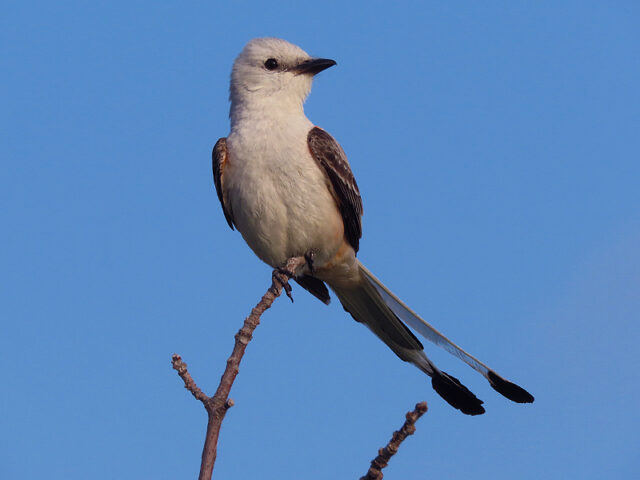









Thank you, Chris Jackson for posting this rare citing of the Mississippi Kite in Lewisville. I live in Dallas, and believe I spotted one on my fence today for a brief visit. I couldn’t grab my camera fast enough so I just need to rely on the memory of seeing this little larger than crow-sized hawk with grey feathers on his back who was just observing from the fence. I sent you an email earlier to see if this was possibly the bird I saw.
Chris,
Awesome site. I identified a Mississippi Kite in my backyard today. Beautiful bird, and your shots are way better than mine!
Chris: We’ve been “fans” of these kites for years and years…but it seemed like they left our Keller-area early this year (we noticed a few days ago that we hadn’t been seeing them!). What say you?
I say, Mississippi Kites are one of my favorite birds! They are very plentiful in the metroplex, and their numbers may even be on the rise. There are however local changes in population from year to year. A good for instance is my neighborhood. This past summer we had at least a half dozen Mississippi Kites operating over our community greenbelt, whereas just 5 to 10 years ago there were none to be found.